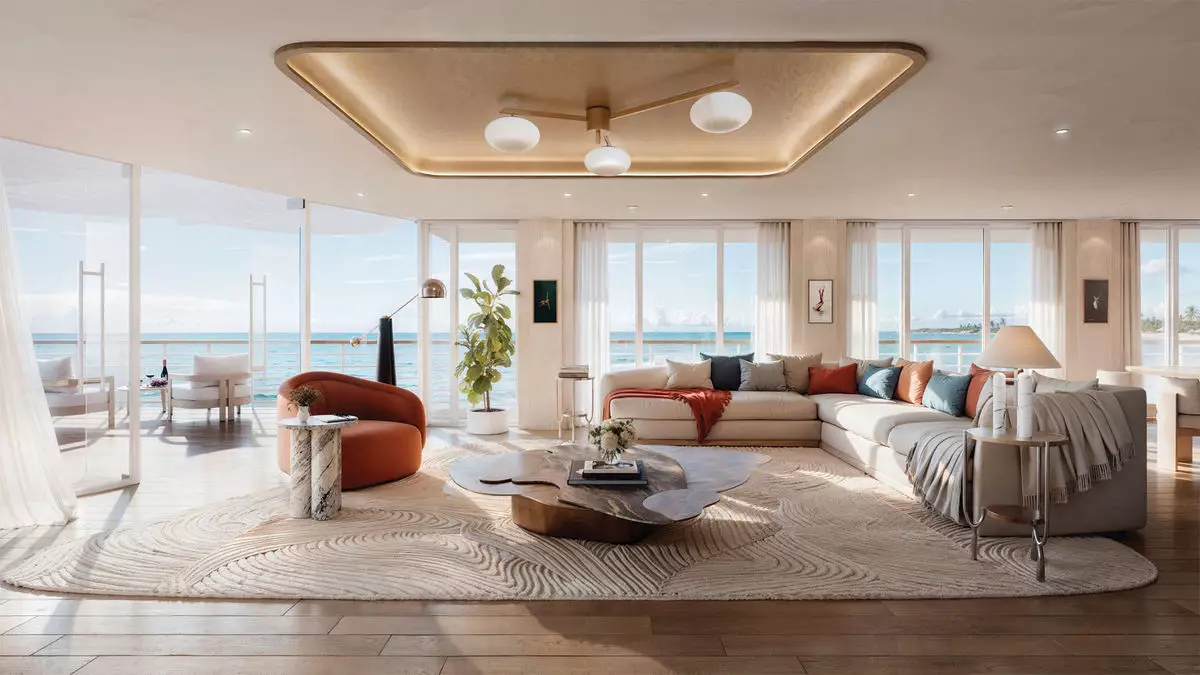The cruise industry has long been associated with short-term vacations and snapshots of exotic destinations. However, a unique niche within this realm is beginning to capture the imagination of affluent travelers: residential cruising. Residential cruise lines are attempting to transform the concept of cruising by offering the option to permanently settle in a cabin at sea. This idea is not completely new; the long-standing luxury cruise ship, The World, has been a pioneer in this market for over two decades. However, the landscape is diversifying, and new players, like Crescent Seas and Villa Vie, are entering the fray with ambitious plans to entice those seeking a more permanent maritime lifestyle.
Many experts are optimistic that this segment will thrive due to the evolving work culture, with more individuals opting for remote work arrangements that allow for flexibility in their lifestyles. High-speed internet access has become the epicenter of this transformation, making it feasible for individuals to maintain their careers while permanently residing on the ocean. The shift toward extended world cruises also hints at a cultural readiness for the idea of living at sea. In this context, residential cruises could redefine not only how we think about travel but also about home.
The Gritty Reality of Residential Cruise Ventures
Despite the glimmer of promise, the emerging residential cruise market is not without its challenges. History has shown that several cruise-related ventures have experienced disappointing launches or outright failures. Notably, recent issues with Life at Sea Cruises highlight the potential pitfalls that could deter investment or customer interest in this promising idea. The hesitance of travel advisors to sell these products, stemming from concerns about operational reliability, is indicative of the growing skepticism enveloping the sector.
While consumer interest is blooming, the complexities of launching and maintaining a residential cruise line involve significant logistical hurdles and financial uncertainties. For example, Crescent Seas, founded by seasoned players in the industry, assures travel advisors that their roles will be integral in making sales, yet the implementation remains to be seen. Travel advisors often operate within conventional frameworks that emphasize traditional vacation packages; selling residential units could necessitate a fundamental shift in their approach to customer service and sales strategies.
New Models: A Coalescence of Lifestyle and Luxury
Crescent Seas is boldly stepping into the ring with its plans for a fleet that will offer luxury living for the well-heeled. With residences ranging from $750,000 to $10 million, the ship’s target market is clearly affluent. However, the sheer cost raises questions about the sustainability of such a venture. Many factors come into play when convincing potential residents to invest their savings in a floating home versus a traditional piece of real estate. It is essential to recognize that living at sea is not just about the experience; it involves practical concerns like healthcare access and long-term relationships with service providers.
Take Villa Vie as another case study; this company is attempting to bridge the gap by providing flexible ownership and rental models. Its founder, Mikael Petterson, seeks to engage travel advisors more effectively, hinting at the necessity for established businesses to adapt or perish in this rapidly evolving marketplace. In this way, residential cruising might not merely be a luxury experience but could emerge as a new lifestyle model, one that emphasizes community among those who choose the open sea as their home.
A Market in Transition: Opportunities and Uncertainties
It’s remarkable how societal trends, particularly remote work, are reshaping lifestyles, making long-term residence on cruises more appealing. Yet, this optimism must be tempered with caution, as numerous logistical issues loom large. Notably, the delays and mishaps from recent launches, such as Villa Vie’s Odyssey which faced operational hiccups, remind potential investors of the intricate dance of regulations, inspections, and maintenance that accompany ships.
Additionally, as the line between traditional land-based living and maritime lifestyles blurs, questions arise about legality, insurance, and environmental responsibilities. Are these companies adequately equipped to manage the challenges presented by continuous operation amid maritime laws and environmental regulations? The industry’s success may depend on how well it navigates these trials. Ultimately, residential cruising may very well become an exciting chapter in the narrative of travel, but it must first demonstrate resilience and reliability to gain mainstream acceptance.
Understanding that there is a complex relationship between consumer behavior and the innovative models being proposed by the residential cruise market will be paramount for its growth and acceptance.


Napsat komentář